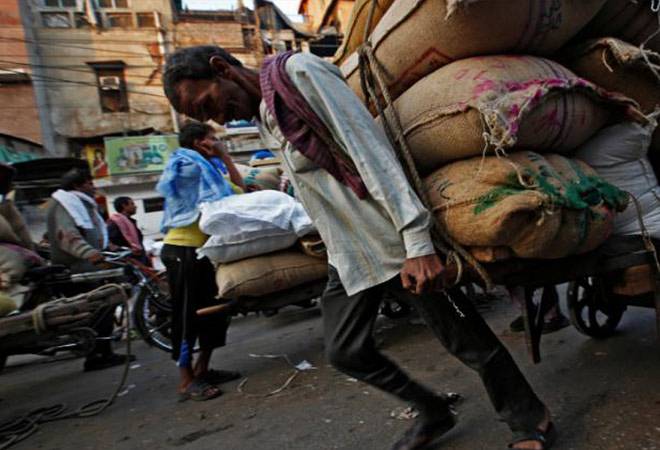The condition of workers in the informal sector has significantly worsened over the last two years, despite contributing to nearly 50% of the country’s GDP and constituting 86% of the workforce. It is estimated that an additional 23 crore individuals have fallen below the daily wage threshold of Rs 375 per day. In fact, there is evidence suggesting increased informality even among salaried workers, revealed the study of the Hunger Watch II survey, which was released on Wednesday, 23 February, by the Right to Food Campaign (RtFC).
The second round of surveys, henceforth referred to as Hunger Watch-II, was conducted in 14 states between December 2021-January 2022, had 6,697 respondents, out of whom 4,881 were from rural areas and 1,816 were from urban areas. According to the survey, 71% of respondents were women. “With the same objectives as before (Hunger Watch-I), Hunger Watch-II sought to document the hunger situation six months after the devastating second wave of Covid-19 in India,” the report read.
In the month preceding the survey, close to 80% of the sample reported some form of food insecurity. As much as 31% reported mild food insecurity, 23% moderate, and a staggering 25% reported severe food insecurity. Furthermore, in the same month, 60% worried about not having enough food, were unable to eat healthy or nutritious food or could eat only a few kinds of foods.
“While the results being presented may not be representative of the district, state or country, they do, however, tell a story of deprivation of lakhs of households in similar situations,” the report read. Hunger Watch-II stated income shock, poor food intake, poor diet quality and lack of access to Government programmes, as four big concerns.
According to the report, two years into the pandemic, 66% of the respondents said that their income decreased as compared to pre-pandemic period. Only 34% of the overall sample reported that their household’s cereal consumption in the month preceding the survey was sufficient. Using the Global Food Insecurity Experience Scale (GFIES), it was found that 79% of the households surveyed reported some form of food insecurity, and an alarmingly high 25% reported severe food insecurity.
The survey further observed, 41% of households reporting the nutritional quality of their diet had deteriorated compared to pre-pandemic levels. 84% of the households had a ration card and over 90% of those who had any ration card that is eligible for subsidised grains, said they received some food grains. However, a quarter of households with eligible members said that they did not receive MDMS or ICDS provisions. Many are left out of the food security net, calling for urgent strengthening and expansion of these schemes.
‘Condition of informal sector workers worsened in last 2 years’
- Advertisement -

